Purposeful, Healthy, and Mindful Living
- What is the main method that we will follow to live this amazing, mindful life?
- What is Ikigai and why the hell are we talking about it?
- Lessons on Longevity, Health, and Happiness – From Ikigai and Others
- Hara Hachi Bu — Fill your belly to 80 percent — a Japanese principle that has blown my mind away.
- About Two Meals a Day and Intermittent Fasting — One of the methods of eating less
- Are there any foods that we should prefer over the rest?
- Retiring early isn’t the best thing after all — An active mind is better than a lethargic one.
- Finding Purpose — Ikigai is Important
- Stress is the worst of all
- Continuous sitting can be really harmful to your body.
- Sleep is more important than you think
- Find flow— staying immersed improves health and happiness
- I was blown away by this finding about exercise
- A feeling of belonging and togetherness is essential to keep us sane
- How to live a happy, healthy, and aware life? – All is Well.
I had planned to share lessons from the book “Ikigai: The Japanese Secret to a Long and Happy Life” and experiences from practicing a sustainable and conscious lifestyle in this piece. But as I wrote, I also added health concepts I had learned (and practiced) growing up in India, lifestyles I had studied from books, and ways of living I had seen while traveling.
So now this article is a conglomeration of the most logical, useful, and effective ideas — that I’ve found — on living a healthy, simple, and, yet, purpose-driven life.
What is the main method that we will follow to live this amazing, mindful life?
Life has a different meaning for each one of us. We follow distinct lifestyles.
Some people go to the Himalayas, rent a tiny cottage in the deodar woods, and live there with six dogs. Some leave everything behind to disappear in the ashrams of India and Bali. A lot of families choose cities, villages, and towns to live, work, and make their life there. Many people like to run businesses and be their boss and watch television at night. Some of us are happiest in the places we were born. So we never leave our cities, get married there, find work, and grow old in our paternal houses.
Irrespective of what we choose not all of us live with awareness, health, and fulfillment. And there isn’t any particular way to a good, worthwhile, and calm living.
In this article, we will look at the most effective and proven ways of thinking and living that will help us find meaning and lead a fulfilled and healthy life.
Please note that as part of mindful living I’m not going to discuss how to find a passion or your most desired job. For finding passion or building a career you can love have a look at the linked articles. If you are planning a career change, read my journey of becoming a writer from a software engineer. And if you are starting from the beginning, the piece on why work shouldn’t be boring is important. Hope these inspire you to choose a job that doesn’t make you dread Mondays.
Here I will share the most impressionable lessons from
- the book “Ikigai: The Japanese Secret to a Long and Happy Life” (and other books) on purposeful conduct,
- simple living in India and other countries,
- and my own experience of conscious and healthy living.
And this will be a progressive guide so I will add what I learn (and remove what I unlearn) as we go.
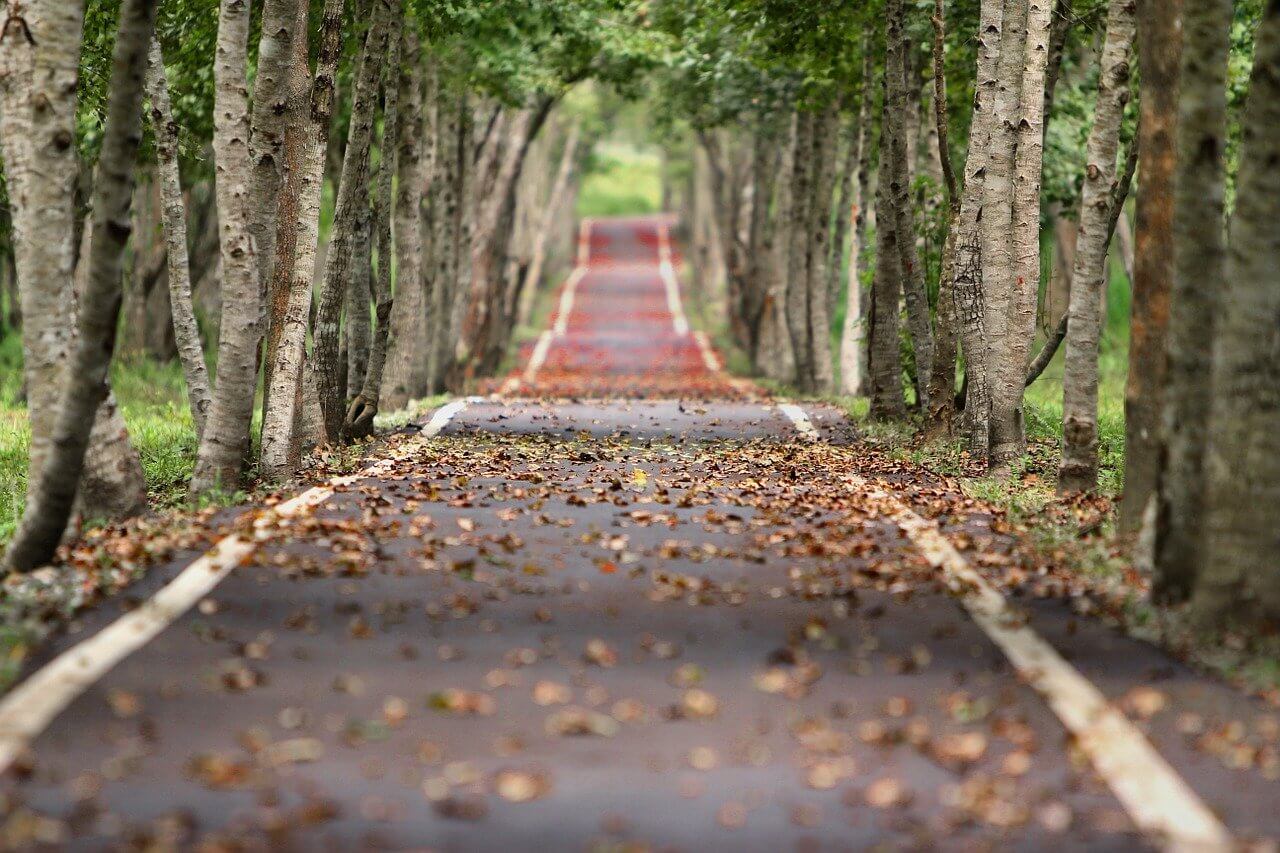
What is Ikigai and why the hell are we talking about it?
When I searched for Ikigai (a Japanese concept), the tonnes of articles about it blew me away. Everyone wants to ride the wave of Ikigai because we want to live a healthy and long life as the Japanese do until the age of 84. Japan ranks fourth on the life expectancy graph.
First, I was quite divided on Japanese methods (no offense to anyone). All I knew about Japanese life was that the people there work hard. Some of them toil sixteen hours for years, sleep in their offices, and have no life and work balance. And if we are measuring every aspect of human life, let me tell you that Japan ranks 52 on the happiness index, so not that high up in the line. (Bhutan rules the happiness category.).
What would a country that always seems so busy and rushed, and judge people on productivity know about mindful and healthy living? But when I read the Ikigai methods, some of them made a lot of sense to me. And why we don’t see a calm Japan despite Ikigai (not at least from where I see) is because like everywhere else not everyone would follow even a proven concept (how many Indians do you think follow yoga and meditate?).
We will only read the methods and ways of Japanese who follow Ikigai and find it beneficial.
What is Ikigai?
Dictionary.com defines Ikigai as one’s reason for being, which in principle is the convergence of one’s personal passions, beliefs, values, and vocation: those who follow the concept of ikigai undertake the activities of their life with willingness and a satisfying sense of meaning.
As per Wikipedia, Ikigai is a Japanese word consisting of iki meaning “life; alive” and kai meaning “effect; result; worth; use” (voiced as gai). The combination of the two could mean “to have a life of effect” or “a reason or worth to live.”
iki (生き) = life and kai (甲斐) = effect
Most modern interpreters read Ikigai as “a reason for living” or “something that makes life worth living.” And some interpret it as a passion that is worth pursuing.
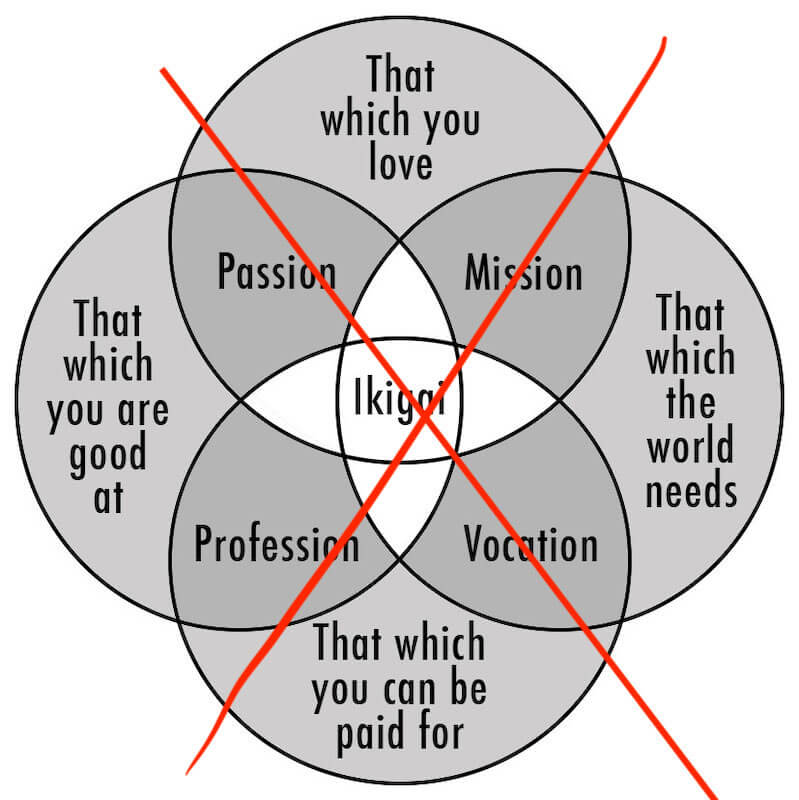
IkigaiTribe (which charges $4000 for Ikigai coach training) states that the popular Venn diagram showing an intersection of doing what we love to do, what gives money, what people need, and what we are good at does not represent Ikigai. I agree.
The original Venn diagram had the word purpose — not Ikigai: Andres Zuzunaga had designed the drawing to represent purpose. A blogger Marc Winn had used that original diagram to represent Ikigai – by replacing the word purpose with Ikigai. Using this Venn diagram to explain Ikigai would be as wrong as naming an avocado tree a mango tree. (You can listen to this IkigaiTribe podcast with Andres Zuzunaga where he breaks the myths about the diagram.)
Various websites, books, and interpretations understand Ikigai differently. I’m not an expert on Ikigai. I haven’t even read all the books on Ikigai, yet (two books I will read on Ikigai are Ken Mogi’s The Little Book of Ikigai and Yukari Mitsuhashi’s Ikigai- The Japanese Art of a Meaningful Life). But the more I read and contemplate about Ikigai I understand that Ikigai doesn’t target career or job. Ikigai encompasses life as a whole.
I interpret Ikigai as one’s awareness: What are my priorities, what do I like to do, what makes me happy, What should I eat, how should I be with people, and how should I focus on my personal growth — this is Ikigai. Ikigai is made up of small fun and worthwhile things that we fill our day with. Ikigai is about being oneself and joining hands with the community to laugh and help each other out. Ikigai is about focusing on the details of the mundane and finding joy in little things.
“If you can make the process of making the effort your primary source of happiness, then you have succeeded in the most important challenge of your life.”
Ken Mogi, The Little Book of Ikigai
Ikigai is a Japanese concept but other countries have their own versions of Ikigai.
Let me tell you an interesting story about mindful living and Ikigai in India
My parents had a guru. He was not one of those gurus who asked people to donate money nor did he have giant international ashrams where he preached how awesome he was. Clad in his white dhoti, Guruji read and wrote under the shade of his guava tree.
Guruji was a scholar of mythology, literature, and history. Sanskrit was his mother tongue, and he knew all the four Vedas. We never knew that he wrote plays(in Hindi, English, and Sanskrit), directed, and acted in plays(at Prithvi theatre, Mumbai). When I started this article and searched about him I discovered he was a playwright.
I didn’t even know he was a professor and a prolific writer. Rooms full of books at his bhawan(house) near my parent’s house could have given a hint, but well, I was only a young girl then, more naive than now.
What did I know about him? I knew my parents followed bauji(father), that’s what we called him lovingly, because of his deep knowledge and his simple and conscious living. Maybe they thought of him as an elderly hand over their heads(both my grandparents had passed away).
I would often go to bauji’s house with my mother who cooked for him whenever he requested.
My mother would be in his large, modest kitchen, and I would run around the sunny corridor, hiding and coming out of its shadows. I would go into the kitchen to see my mother chop tomatoes, boil dal, and make rotis. Or I would trot to the guava tree branches jutting above the corridor’s fence. Rising on my toes, I would peek down the fence to admire the green courtyard below it. But the plan was to pluck the biggest guavas. (I’m yet to taste guavas as sweet and juicy as of that tree’s.)
The courtyard had a large garden full of tall trees and potted plants. Two beautiful pet cows grazed in one corner of the garden, and two feisty peacocks roamed around in its velvetiness.
When I wasn’t stealing guavas or staring at animals, I was watching bauji.
I remember bauji vividly. I’m often surprised by my fluid memories of his big, open house and him lying there in the sun on his long cot in the corridor. Or he would be sitting on a wooden chair, sprawled across its length, meeting people who had come to see him from all over the world.
Bauji was tall and never fat. He always wore a white kurta or kameez and a white dhoti.
He lived on the first floor in one of the largest rooms with windows and balconies overlooking the ground floor. His room had large divans, full of books, photos, and paintings of learned people and gods(he translated Kalidasa’s work and even wrote biographies of Kalidasa and others). The bookshelves of that room would make historical libraries shy.
Even in my early memories, bauji is already old, in his late eighties. His hair all white, his skin dry with the winter cold, and his cheeks sunk because he had lost (almost)all his teeth.
As a young child who didn’t expect much fun out of an old man, I was still eager to see him, to touch his head or feet. He would kindly smile, and say jeete raho, jeete raho(live long) in a voice coarsened by age and tap on my head a few times.
But in his later years, Bauji mostly rested on his cot in the sun. He was almost 98 when he passed away. It has been 15 years since I got the news he was no more.
As I opened a new document to write about Ikigai, I started writing about bauji. I don’t know why. It was not as if I was thinking about him or had dreamed about him the previous night.
I must have remembered bauji because he is my only window to Ikigai living.
Bauji used to wake up at 3 am. He followed a simple, sin-free lifestyle.
He didn’t drink alcohol (not that alcohol is sinful but it wasn’t part of his culture). His most favorite beverages were buttermilk and milk; he drank tea only rarely. We saw him eat two meals a day, taken at early hours (he must have eaten breakfast early morning but we never saw). He ate rotis, sometimes pooris but never parathas, and vegetarian gravies, dal, and fruits.
Until his late eighties, bauji did most of his personal work himself. I remember him walking around, making his and his wife’s food or heating milk, meeting people, cleaning, and doing other daily chores.
He didn’t even have a television. I can’t even imagine bauji loafing around somewhere or getting bored and going to a club. He read, wrote, and taught people who came to him with questions.
Bauji didn’t speak ill of anyone and practiced restraint. He was a happy guy, busy doing his things, while people ran around him to get his attention. He laughed heartily and smiled as much as he could. Bauji received anyone who had gone to see him even when he was unwell or resting.
He wrote and read with a purpose and lived a healthy and independent life until into the nineties. He was always either immersed in some activity or was relaxing, suffused with gentle calm.
I floated in tranquility in his house, a state I can still reach when I think of his shaala. It was his simple living that attracted me. The way he had drunk the entire bowl of banana curry in two minutes, and I had asked my mother for the same upon returning home. His words, so few, but yet so profound. The way he gazed, and then he turned away. I remember that all.
And now when I know he was is a writer, I feel that his peaceful presence has been guiding me throughout.
Bauji lived a life full of awareness, kindness, and toil – these were his Ikigai.
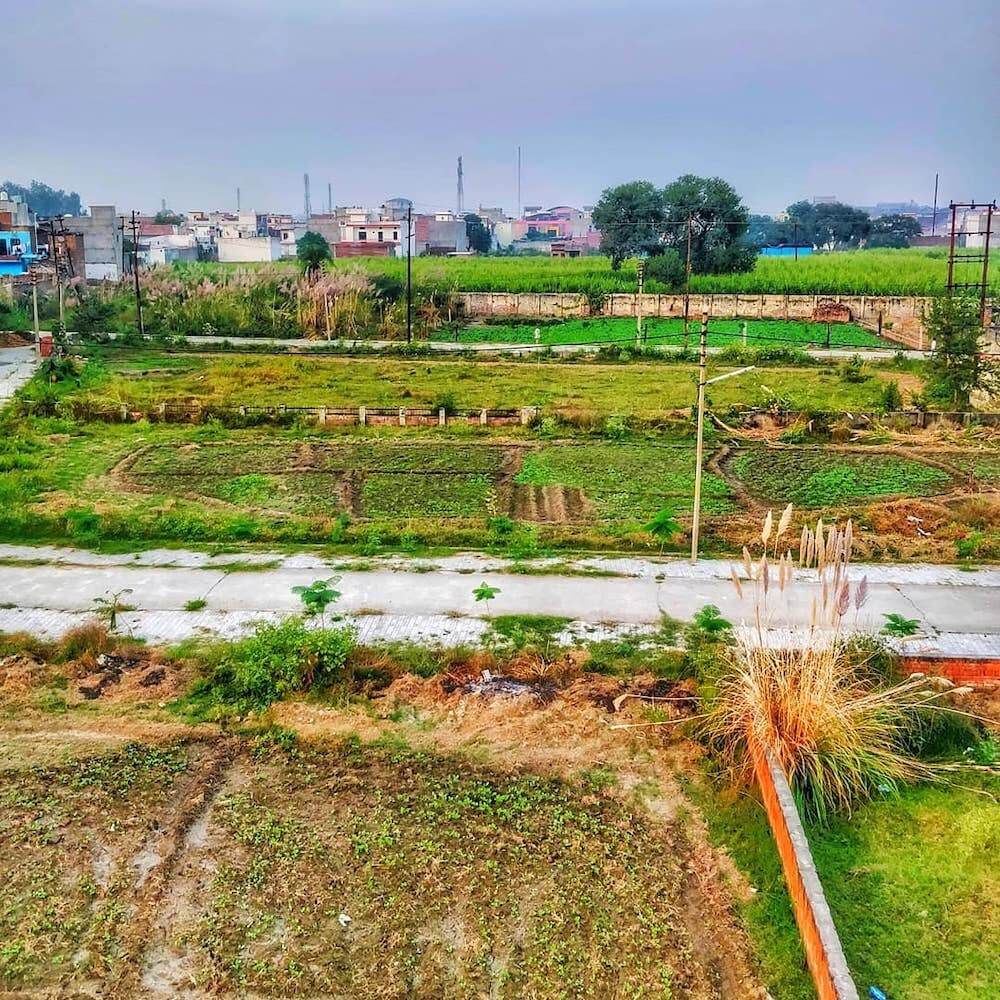
Lessons on Longevity, Health, and Happiness – Delving into Ikigai and Other Ideas
Ikigai is wildly discussed these days. Everyone fancies a long, healthy, and happy life. My inclination towards Ikigai also arises from my wish to be healthy for as long as I live. In this endeavor, I came across the book Ikigai: The Japanese Secret to a Long and Happy Life, by Héctor García and Francesc Miralles.
The book discusses the methods to longevity, health, and happiness. It studies the citizens of Okinawa, an island in Japan where people live longer than anywhere else in the world. It also mentions the studies done in the five blue zones — places where people live the longest — that concluded that diet, exercise, finding a purpose in life, and forming strong social ties are the main methods to longevity.
I found some life-changing and some repetitive ideas in the book. (Repetitiveness presses effectiveness sometimes.)
You might ask what’s so astonishing about the idea of eating well and exercising to stay healthy. Purpose and being with people also look like obvious paths to happiness. We are all social animals, after all, who want to do something or the other.
I will not focus on the general essence of the ideas of food, exercise, and staying active keeping us healthy and driven. I’ve published a lot of articles around these concepts: introduction to habits, 23 tiny habits for a good life, making a daily routine, and best practices to follow to work from home efficiently.
My goal is to bring you the most unheard (at times intuitive) things I found in the book.
I’ve started using some of those concepts right away, a few I always had in my life, and some I’m still incorporating. Though the results are hard to measure, I will talk about the hitherto observed qualitative impacts of the practices in my own life.
Please note: Ikigai has nothing to do with longevity. So the book Ikigai: The Japanese Secret to a Long and Happy Life could have been named anything. In fact, the book’s name is complicating Ikigai. Nevertheless, the book has some brilliant ideas and research which I’m going to share here.
Now with this information, let us discuss the inspiring findings.
Hara Hachi Bu — Fill your belly to 80 percent — a Japanese principle that has blown my mind away.
In India, I often heard that we should eat half roti less or a few spoonfuls less rice than we want. But I never understood why would one deny oneself the pleasure of food coma.
But the book Ikigai tells, “Studies have shown that if we overeat or eat until full, the long digestive process that accelerates cellular oxidation starts wearing down our body.”
While the food is digested, our body cells go under oxidation and reduction. During this process, molecules known as free radicals – that are essential to release energy from our food – are created. But in high quantities, these free radicals can oxidize our cells, engage in unnecessary side reactions, and put our body under oxidative stress.
Thus free radicals can damage the growth, development, and survival of cells in the body.
Free radicals are associated with both development of cancer as well as the progression of aging. (the linked MedicalExpress’s piece is a good read on free radicals).
If we don’t eat food rich in antioxidants (healthful compounds in fruits and vegetables) that neutralizes these free radicals, they will cause cellular damage. But research also shows that rather than neutralizing free radicals with antioxidants, a better approach is to prevent the formation of these radicals in excess(by calorie restriction) as the lifetime of most of these aggressive free radicals is very short and they react quickly.
To state in an oversimplified manner — Digestion is a cumbersome process. The more we eat, the more work our body does to digest food, and the more wear and tear of the cells happens in the process.
We should eat enough to fulfill the nutritional demands of our body but restrict ourselves from overeating or eating until full.
Okinawans consume a daily average of 1,800 to 1,900 calories(compared to 2,200-3,300 in the US). This study discusses that both Calorie Restricted(CR) and traditional Okinawan functional foods with CR-mimetic properties likely had roles in the extended healthspan and lifespan of the Okinawans. (More research is needed.)
How does Japan ensures that people don’t overeat? If you have seen any Japanese television series(I recommend the Midnight Diner) or have eaten at a Japanese restaurant, you would find food being served in small bowls split over many dishes. It is proven that when we eat on many plates we feel we have eaten a lot, but, overall, we eat less and get up slightly hungry.
Even American buffet restaurants utilized this concept by not picking up dirty plates from customers’ tables and invoking them to believe that they had already eaten a lot. Thus the customers shied away from getting more.
Eating slightly less than we think we need is a proven way to protect our cells from wearing down and our bodies healthy.
A supercentenarian Walter Breuning, who was born in Minnesota and died at 114, said his longevity stemmed from two things: eating two meals every day and working — both mentally and physically — for many years as he could.
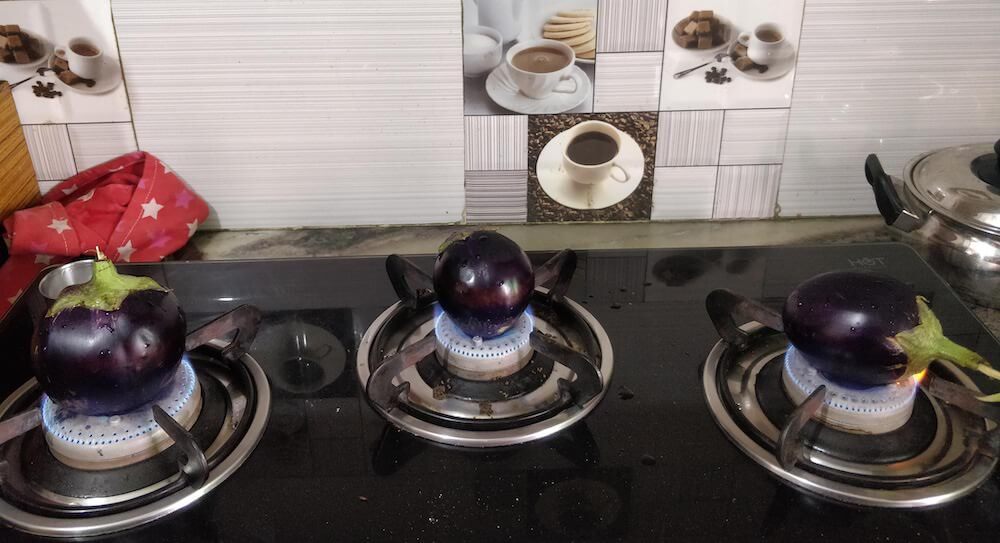
About Two Meals a Day and Intermittent Fasting — One of the methods of eating less
Intermittent fasting is a raging concept. I first read about intermittent fasting on James Clear’s blog.
In broad terms, intermittent fasting is giving the digestive system a rest by not eating for long hours (usually 12 to 16, or more) and allowing the body to burn stored fat.
In the past, we needed the extra fat for winter. But why do we store fat now when we are unlikely to end up on an isolated uninhabited island where the only food we could get would be the fresh fish we catch from the ocean? Using stored fat makes sense.
Here’s how intermittent fasting works.
Until 3-5 hours from the time of a meal a human body stays in the fed state and digests food. After the fed state, comes the post-absorptive state, where the body isn’t processing any food. The post–absorptive state lasts until 8 to 12 hours after your last meal. After this state comes the fasted state. In the fasted state, the body switches its source of energy from glucose stored in the liver to ketones, which are stored in fat. Hence in fasting, stored fat is burned.
Eating —> Fed State (3-5 hours) —> Post-Absorptive State (5-8-12 hours) —> Fasted State
But how many times have you seen yourself not eating for 12 or more hours? I only fasted for 12 hours when I skipped breakfast or was sick and didn’t feel like eating. When I didn’t eat breakfast or dinner, people told me that skipping meals is bad for our health. Oh, you must be dieting, they said. I felt embarrassed about not eating. But those same people looked at me in contempt when they saw me eat a plateful of lemon rice. Eventually, I decided not to care about what others think. What a simple solution!
This study (or something a bit less technical, this Healthline article) shows that the idea about breakfast being the most important meal of the day or the popular harmful effects of missing breakfast are all old myths.
When we skip breakfast, our daily calorie intake (usually) reduces — because we eat twice instead of thrice.
As we saw earlier, in fasting energy is retrieved from ketones rather than glucose – creating a metabolic switch. Calorie restriction (undernutrition but not malnutrition) has been proven to be metabolically beneficial.
The impact of ketogenesis (an increase of ketones in the bloodstream) also carries over into the non-fasting period and can improve glucose regulation, increase stress resistance, and suppress inflammation. The broader benefits of fasting include not only disease resistance but also improved mental and physical performance.
Although the internet is filled with articles that discuss the harm of skipping food, none of them refers to any relevant and causation research. Skipping food isn’t bad – until you get the essential nutrients. In fact, a study on rats proved that intermittent fasting improved their life span.
Skipping breakfast — or a 16-8 fasting-eating — is only one way of intermittent fasting. You can also do 24-hour fasting or alternate-day fasting or 5-2 fasting when you eat regularly for five days but fast on the two days.
Though intermittent fasting may impact people differently — some may feel low energy levels, headaches, dizziness, lack of concentration, or anger due to being hungry (hangry) — the time intervals for fasting and the food consumed can be experimented with to not feel lethargic or hungry all the time and function well while fasting. The best method to fast would be different for each person.
Practice fasting and observe your body and behavior. Change your food as per your body’s and mind’s specific requirements. You might also want to talk to a dietician for expert advice.
I have come on a long journey from 2017 when I consumed three heavy meals a day, ate late-night whenever I liked, and my exercise frequency was lower, too. Now I do intermittent fasting since March 2020.
I eat two meals a day now, one in the morning between 9-10 am and one in the evening around 5-6 pm. I don’t usually eat for 12-13 or more hours. I don’t snack late at night, and much to my husband’s dismay, I (mostly) say no to a 9-pm pudding. But if it’s wood-fired mushroom and spinach pizza? Mama, I’m so screwed.
Around 1-2 pm, when my body has digested the breakfast, I feel hungry, and my concentration flitters between food and, well, food. That’s when I eat fruits, nuts, drink sugar-free juices and buttermilk, and continue to drink water. Keeping yourself hydrated is important. And if I realize the breakfast can’t sustain me until evening (or if the dinner couldn’t keep me full until morning), I eat more the next day.
My body values the time free of digestion. Even though I eat my bellyful in the two meals, I intake lesser calories than three meals. I haven’t weighed myself for over a year, but I feel lighter and energetic. My jeans that keep falling (and other clothes) prove I’ve lost weight. I exercise three days a week and a combination of both food and exercise must be doing the trick. And as less food protects our cells from damage in the long-term, I’m doing a victory dance right now.
A combination of eating less and eating within a specified interval should work the best. I’m still trying to find a balance between only taking two meals and still not eating to my capacity in those two sittings. For if I eat less, I can’t sustain the fast. These are minor things to solve.
Here’s something important about intermittent fasting
I really liked this piece on the fad of intermittent fasting by the US National Institute of Health. The article states that most of the research on intermittent fasting has been conducted on rats and overweight adults. It also tells us that we still lack research on the effects of intermittent fasting on aging in human adults.
The article draws from the research done on intermittent fasting by Mark Mattson, senior investigator for the National Institute on Aging. The results emphasizes that more than intermittent fasting, the restricted calorie intake produces the health benefits (that I mentioned above.) So if you fast on two days, don’t overeat on the rest of the five days, else you might not see any benefit.
Intermittent fasting is a brilliant technique to lose weight, increase resistance against diseases, and protect our cells from degeneration.
I would love to hear about your intermittent fasting journey in the comments.
Are there any foods that we should prefer over the rest?
Simple living, eating, and Ayurveda in India
“Processed foods and heavy food which needs a long and taxing digestion process are harmful for us.”
Of course, the tastiest foods such as baked goods, prepared foods, sweetmeats are all bad — because our bodies were never made to eat all this. We know this yet we binge on spicy samosas, chilly chips, and pineapple pastries. Like the confused parrot Rio who wanted chocolate shakes over guavas. The dilemma!
From my parents and bauji, who have always believed in eating simple and seasonal food, and from years of reading and experimenting, this is what I’ve understood about food —
fresh, less-processed, naturally grown, whole, seasonal, homemade, oil-free food is the best.
In my parents’ home, whole-wheat flour is always preferred over all-purpose flour, buttermilk and homemade lemon water reign over carbonated drinks, fruits and vegetables of many varieties are part of daily life, pulses are eaten every day, and we never buy canned lychees or mangoes but wait for the summers to get them fresh. My mother uses minimal oil or ghee.
Eating as per the Ayurveda – the ancient science that is known to enhance longevity – is our mantra. So too much ginger is bad in summers as ginger is hot, and garlic is better in winters. Cucumber is the summer king because it hydrates, and urad pulse is heavy so don’t eat it at night unless you want to sleep in the bathroom. You can see where I’m going with this.
Keep in mind the natural properties of the food and align them with your requirements, body needs, and weather. Eat seasonal produce.
The ravenous young girl I was did get irritated about eating papaya every day and not binging on street food or pizza. But the people around me who I have seen follow these practices have stayed healthier than youngsters around me who (sadly) often complain of backaches, overweight, and digestion problems. Almost all my friends wear spectacles while my parents’ eyesight was perfect until they both reached their late forties.
But I still can’t say that the diet at my home was the healthiest. Basic things such as high carbohydrate consumption, fried food, and regularly eating homemade sweets with artificial white sugar are an integral but questionable part of Indian homes. [India is number 161 on life expectancy.]
Exercise and other things also play an important part in health, and we will talk about that later.
Okinawans — people who live the longest and have the lowest cases of chronic diseases — seem to follow similar principles about eating fresh and natural food.
Okinawans’ food includes fresh fruits and vegetables of varying colors(mostly home-grown), white rice, and fish(fresh and locally sourced from the coast) three times per week. They eat a lot of food rich in antioxidants regularly — tofu, miso, tuna, a variety of vegetables, sweet potato, and Sanpin-cha (jasmine tea).
Okinawans eat one-third sugar and half as salt as the rest of Japan. Their diet is not known to contain a lot of processed food or sweet or canned products.
The food of Okinawans is considered one of the main reasons for their healthy longevity.
Here are two centenarian Okinawans speaking about longevity,
“Eating vegetables—it helps you live longer.”
“To live a long time you need to do three things: exercise to stay healthy, eat well, and spend time with people.”
If you don’t live on a Japanese island, find any food rich in anti-oxidants (broccoli, citrus fruits, berries, dried fruits, grains and wheat, red wine are all good). Eat fruit and vegetables in variant colors. Fish is a great source of protein. Find fresh. Also, green tea is good.
After years of experimenting with food, I’ve gone back to the basics, too. Vegetables and fruits, whole wheat bread, rice, nuts, buttermilk, green tea, cottage cheese, a little tofu, pulses, fish and other seafood, soups, and sugar-free juices form my daily diet.
I read ingredients on packets and don’t buy anything with palm oil, vegetable oil, all-purpose flour, artificial colors, and so on. What I’ve learned in the process — eating good-quality healthy food isn’t easy. The entire industry runs on the fact that we buy and eat what the market sells and don’t check the packaging.
Just the other day I was buying jalebi from an over-bright, giant restaurant. The shop is known for its chaats and sweets. As I noticed the bright orange color of the jalebi, I asked the chef if the jalebi had color. He said, “It does. But not the usual color. It is an edible color.” I gasped. I still voraciously ate the sweet but decided never to buy from there again. Sometimes smaller shops are better than the big ones.
Frankly, the opposite of what constitutes good food is being sold. Be careful. Eating healthy is not easy unless you cook every meal or dine at the fictional Midnight Diner in Tokyo.
How do I maintain my diet while traveling? I stay at homestays so I eat the breakfast the family provides. Then, as you know, I eat fruits — which you can get anywhere — and drink tea. I get my second meal from restaurants or I prepare. And the dinner is both a hit or a miss given how well I understand the restaurant’s menu and its reviews.
Well, I try my best and that’s all there is.
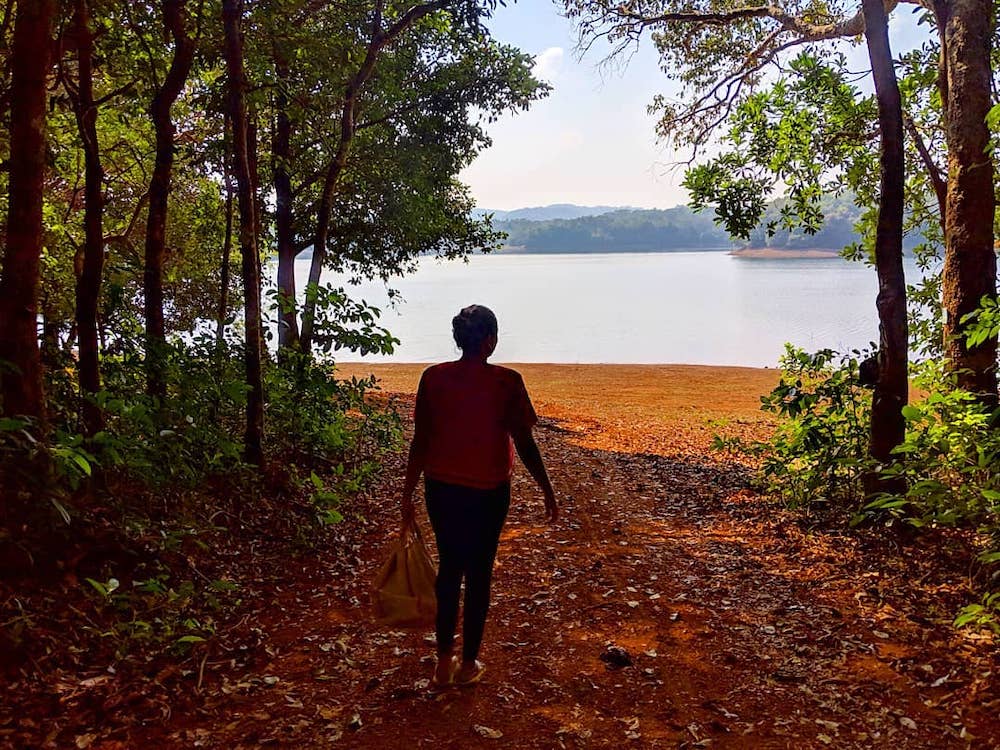
How’s my health?
I have a pretty active lifestyle. I can run ten kilometers any given day, followed by traveling or staying put. Then I write on a desk 7-8 ( or if needed 16 hours a day), cook, walk, and clean, do other administrative tasks. At the end of the day, I still have the energy left to dance around, much to my husband’s horror.
I defeated a younger, healthy man in arm wrestling once. The only time I’m weak is on my periods, and I’ve not been able to do anything about that apart from wrapping myself in a heat belt (Update 2024) putting a hot water bottle to my stomach and letting my body heal.
I’m not boasting about my physical status but emphasizing that one of the things that have kept me healthy is my conscious and good diet. I’m able to live the way I do because of my food and exercise choices.
But eating healthy vegetables all the time when I can binge on butter naan, lasagnas, and gulab jamuns doesn’t sound like fun. So why should I go green?
Eating healthy is a choice. Healthy food can be delicious, too. Have you ever tasted jackfruit or mango fish curry? Tried salads with grapes and pineapples? Switched to whole wheat rolls instead of the all-purpose flour ones? Well, do give healthy food a chance and see for yourself.
Now my system feels so foreign to heavy and oily dishes that whenever I (accidentally) get such food I become a bulgy and morose sack. Good and wholesome food is my tastiest food.
It’s all about priorities.
Retiring early isn’t the best thing after all — An active mind is better than a lethargic one
The authors of book Ikigai state— “Studies show that people who maintained a low level of stress, who faced challenges and put their heart and soul into their work — or something they cared about — in order to succeed, lived longer than those who chose a more relaxed lifestyle and retired earlier.”
Most centenarians and even supercentenarians in Okinawa wake up early, exercise a bit, tend their gardens (for hours), meet their friends, cook, dance, and party.
One Okinawan said about his morning routine,
“I feel joy every morning waking up at six and opening the curtains to look out at my garden, where I grow my own vegetables. I go right outside to check on my tomatoes, my mandarin oranges … I love the sight of them—it relaxes me. After an hour in the garden, I go back inside and make breakfast.”
Sounds logical, right? When we are driven towards something meaningful(or many smaller things), we don’t have time to fret over the imaginative disasters that may never happen. We would have a little stress of the tasks, but as long as we don’t overstress, that flicker of care is essential to getting anything done.
Every day I hear old (and young) people say they don’t have anything to do. Everyone seems bored. My parents call me in despair sometimes. What do we do? We are free. Nothing to do. Although they are relaxed and happy that they are finally devoid of responsibilities, they feel purposeless. But when my father is busy with an administrative chore or my mother is stitching clothes or tending her garden they both sound happier, driven, and don’t mention feeling aimless.
A lot of old Indian people say that you should keep yourself engaged in something or the other until the end else your brain will get jammed. They make more sense to me than those ever-growing millennials who want to retire early to chill on the beach with a virgin mojito.
Do we really relax with an entirety of life in front of us and nothing to do, or do we start feeling useless?
Little things to do every day give us a purpose and meaning to go on. Apart from making us feel worthwhile, the activities we do also keep our minds active. Neurons and their internal neural connections — things that think for us — would deteriorate as our muscles do if we don’t exercise. If our neurons weaken, our ability to think and react would reduce.
A 2015 study by the Center for Disease Control and Prevention in the US showed that a strong association exists between employment and health status in older adults beyond what can be explained by socioeconomic factors (eg, education, income) or health behaviors (eg, smoking). Employed older adults had better health outcomes than unemployed older adults.
Our brain keeps working if we give them work. So choosing even a simple yet engaging task could be good as it would make us think. Traveling to a new place and exposing ourselves to out-of-comfort zones also vitalizes our brain.
When an Okinawan was asked about his secret to long life, he said, “The key to staying sharp in old age is in your fingers. From your fingers to your brain, and back again. If you keep your fingers busy, you’ll live to see one hundred.”
Continue learning and exposing yourself to small challenges and uncomfortable situations to keep your brain active and you driven.

Finding Purpose — Ikigai is Important
Ikigai is not our ultimate goal in life. Ikigai is not our passion. Ikigai is not about becoming a world champion or publishing a novel or getting promoted. But Ikigai is the smaller things that we like to do(which might include our work), that keep us going, and fill our day with meaning.
Ikigai is one’s awareness and how one chooses to live life. What we eat for breakfast, do we grab a burger on the way or cook a meal, how we react to someone in need, what do we say to our friends at the end of the day, how we spend our evenings, these form our Ikigai.
Ikigai is the energy with which we do things.
Here are some Okinawans talking about their Ikigai,
“I plant my own vegetables and cook them myself. That’s my ikigai.”
“I make things with wicker. That’s my ikigai. At seven I calmly start working on my wicker. When I get tired at five, I go visit my friends.”
An Okinawan said about his longevity,
“Doing many different things every day. Always staying busy, but doing one thing at a time, without getting overwhelmed.”
We should keep purpose or passion and Ikigai separate. But as what we are doing now is what we do in life, our smaller Ikigai or the way we live would also guide us to our larger mission and meaning.
People who tend their plants all day long are more likely to grow their vegetables and cook them. Those who cook have more chance to adopt other healthy habits, like not buying processed food, too. People who like taking care of their friends are the ones who end up taking responsible positions in community meetings later. Those who work all day long might volunteer for a Sunday deadline, too. They are the ones who will rise to even higher positions, eventually doing more of what they do now. Ones amongst us who choose to walk instead of taking a cab would most probably be the ones who sign up for a marathon.
Do you see how smaller Ikigais may shape our whole life?
My Ikigai is writing and sharing with the world, living healthy, spending time with friends, playing, eating, smiling, getting to know people and places by traveling, and staying in nature. Once I realized the kind of things I like to do, I designed my life around these. And now all these things fit into each other like the pieces of a crossword puzzle. These activities form not only my long-term goals but also provides me short-term happiness and fulfillment.
Bauji’s Ikigai was doing his own work, taking care of his health, living simple, helping others, and writing.
The oldest Okinawans spend a lot of time tending their plants, cooking, meeting friends, dancing or singing, working, walking, and celebrating. These small things that fill their day not only make them happy and give them a sense of purpose but provide a feeling of togetherness while keeping their brains active.
Should we do everything with a goal in mind? No. Ikigai says the opposite. We should do things we like just because we like them. The harmony of these fun and mindful activities will keep guiding us in the right direction, in our direction.
Here is a recommendation — If you want to read one book today, pick up the Le Petite Prince by Antoine de Saint-Exupéry. The book is an intelligent guide to why being is more important than doing (linked is my article on the book).
Stress is Our Worst Enemy
I was flabbergasted when I read stress is one of our worst enemies. I had always imagined that worrying about our problems and solving them would keep our system running. That’s true in part- our bodies and mind are made to think, solve, and stay active. But over-stressing is not good for us.
As per a study on the impact of stress on the body, “stress can cause structural changes in different parts of the brain. Chronic stress can even decrease our brain’s weight.”
The study further talks about the long-term effects of stress on the nervous system, that stress can cause memory disorders, it affects cognition, learning, our immune system-(severe stress can lead to the growth of malignant cells), and stress isn’t good for either our cardiovascular or digestive systems.
Of course, the intensity of the effects depends on the stress level and the duration of stress.
stress >> premature cellular aging >> not worth it >> relax.
An Okinawan said about his secret to long life, “Don’t worry. The secret to a long life is not to worry. And to keep your heart young—don’t let it grow old. Open your heart to people with a nice smile on your face.”
Why do humans worry so much?
Research states that humans are the only animals who can think about their futures. And because we want to maximize our happiness in the future, we keep planning it trying to gather all the best experiences in one limited lifetime. We are forever optimizing. [How Emotions are Made is a great read on body-budgeting and how we think about our future.]
How many times do you lie down on the grass and watch the squirrels scuttling on the tree shadowing you? Do you desire a life as free as hers?
Well, I watch the squirrels every day and think about that free life, too.
I’ve realized that that free life is right in front of us. That free life doesn’t come with a big paycheck, doesn’t come by retiring, doesn’t come with a digital nomad lifestyle, doesn’t come by being your own boss, doesn’t come by becoming a squirrel. I’ve tried them all(except the last one).
Anyone can live a free life with or without the above. And you don’t have to go to Goa or California or Croatia to feel that infectious independence. You can embrace that freedom anywhere. How?
A free life is realized when we stay in the present and don’t worry about the future too much. Ever been on a merry-go-round when you were so busy screaming that you forgot about everything else? How about the time you went to visit a friend and played all day long without realizing the sun has set? Or when you visited a new market, did you think of anything beyond the colorful clothes and aromatic foods being sold?
You were so immersed in all these experiences – in the now – that neither you thought of the past nor the future. This state of the now is the ultimate freedom a human being can hope for.
Learn to be mindful. Learn to be in the present. That’s our only hope.
How to be mindful in this turmoil of existence? Practice mindfulness, yoga, and deep breathing. Remember we can’t be at ten places at one time. We need to stop thinking of the what-ifs and how’s too much and focus on the now. When the need comes, our body and mind will prepare themselves to act.
Yeah, right. You said it, I did it.
I know it’s difficult to not solve the problems of the future in the present. But we can reduce this eternal planning using some methods.
As I also suffer from this planning mania, I took a Vipassana meditation course of ten days. Now I practice meditation(some days just for five minutes or during my routine activities like showering). The practice of bringing my focus to my breath again and again (that’s what meditation means) helps me later in pushing away thoughts that aren’t relevant to the now.
Every time I find myself thinking about something in the future, I tell myself I will deal with it when I come to it(a trick I’ve learned from my partner). I also repeat to myself that everything takes its own sweet time.
I spend a lot of time in nature (I wrote most of this piece in a garden of a village in Coorg, Karnataka). You can hardly worry when you see monkeys climbing over your rooftop trying to grasp that papaya leaf or a cat that goes so silently she almost gives you a heart attack.
I also read a lot. Most good books tell me to stay calm and unaffected by others’ actions. Using all these methods I try to stay grounded in reality.
Even after following all the mindfulness practices, I do get stressed or lose my calm making the life of people around me hell. In fact, I’m still one of the most reactive people I know. But it means I’m aware, I’m trying, I will keep trying, and that’s all that matters.
A positive attitude helps more than self-condescending. The Ikigai book states, “Emotional awareness and positive attitudes have also been found to be the two most common traits of people who live for long.”
But what if stress is part of your life or job? You may have to reprioritize your life. Or do things while staying aware that your work is stressful but staying constantly agitated won’t help. Well, has it ever?
The other day I was learning how to drive on a jammed road in Bengaluru. The car came to a stop as I forgot to lower the gear at a slow speed. A continuous cacophony of horns felicitated my mistake. But neither did I get frustrated nor did I feel rushed. I slowly started the car. Had I panicked, I wouldn’t have been able to start the car, invoking more honking, and more panic.
When we panic or worry in a bad situation, we get more stuck because we can’t think straight. To solve the situation, we need to analyze, not worry.
Driving is a great example of a job that is frustrating and stressful, especially when done for long hours on Indian roads. Anyone who has driven knows that staying calm is the only way to drive. And that’s how all jobs and other real-life things have to be done, too.
The authors of Ikigai said at the end of the book, “Looking back, our days in Ogimi were intense but relaxed—sort of like the lifestyle of the locals, who always seemed to be busy with important tasks but who, upon closer inspection, did everything with a sense of calm. They were always pursuing their ikigai, but they were never in a rush.”
Remember: Even in the middle of a storm, no one can stop you from having an inner sense of calm. And if you are calm, you will be able to come out of your problem more effectively than if you weren’t.
Another wise Okinawan said about a slow lifestyle, “Live an unhurried life “My secret to a long life is always saying to myself, ‘Slow down,’ and ‘Relax.’ You live much longer if you’re not in a hurry.”
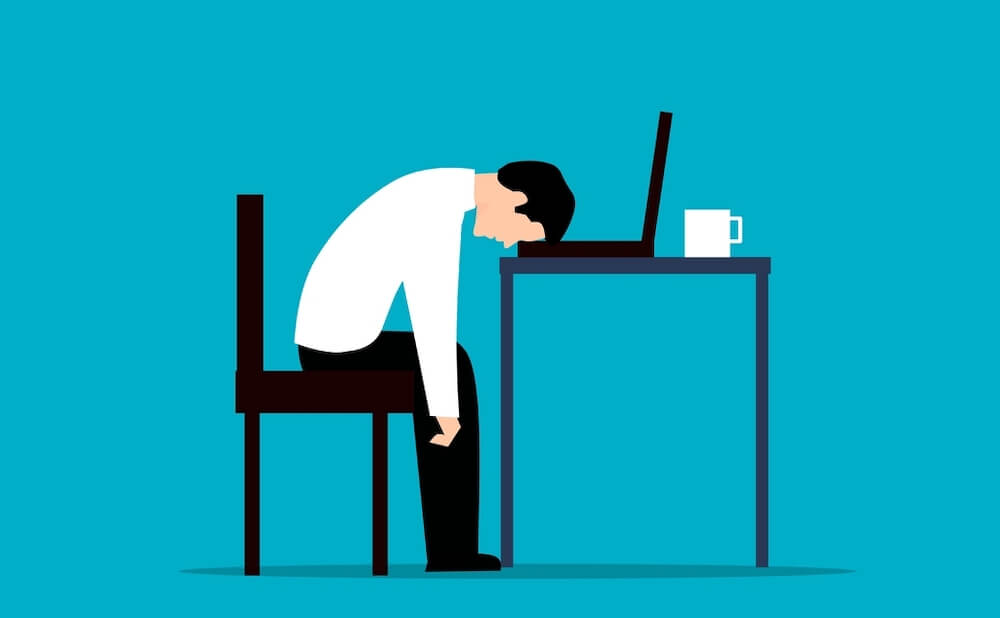
Continuous sitting has serious harms
Maybe you already know that if you sit all day long your body doesn’t feel good.
But did you know you can nullify the harmful effects of sitting for an hour if you get up, move, and walk for even a few minutes? Well, I didn’t.
Studies have shown a connection between a lack of physical activity and the aging of cells. The Ikigai authors put it like this — “it sounds logical right that when we keep sitting our body would think we don’t need movement and energetic young cells so our systems would deteriorate thinking we are already old and don’t need a lot of exercise.”
“Metabolism slows down 90 percent after 30 minutes of sitting. The enzymes that move the bad fat from your arteries to your muscles, where it can get burned off, slow down. And after two hours, good cholesterol drops 20 percent. Just getting up for five minutes is going to get things going again.”
Even if I write for long hours, I now get up every hour to drink water, pee, move around, and waggle my arms. How do I remember to get up? No, I don’t have an alarm. I drink so much water that I have to get up to pee. You can choose your own pressure point.
Get up and move in between sittings. Avoid lifts. Climb. Play. Run. Clean your house. Have someone run after you. How? Have you ever tried throwing a banana peel at your friend or your partner? Please do.
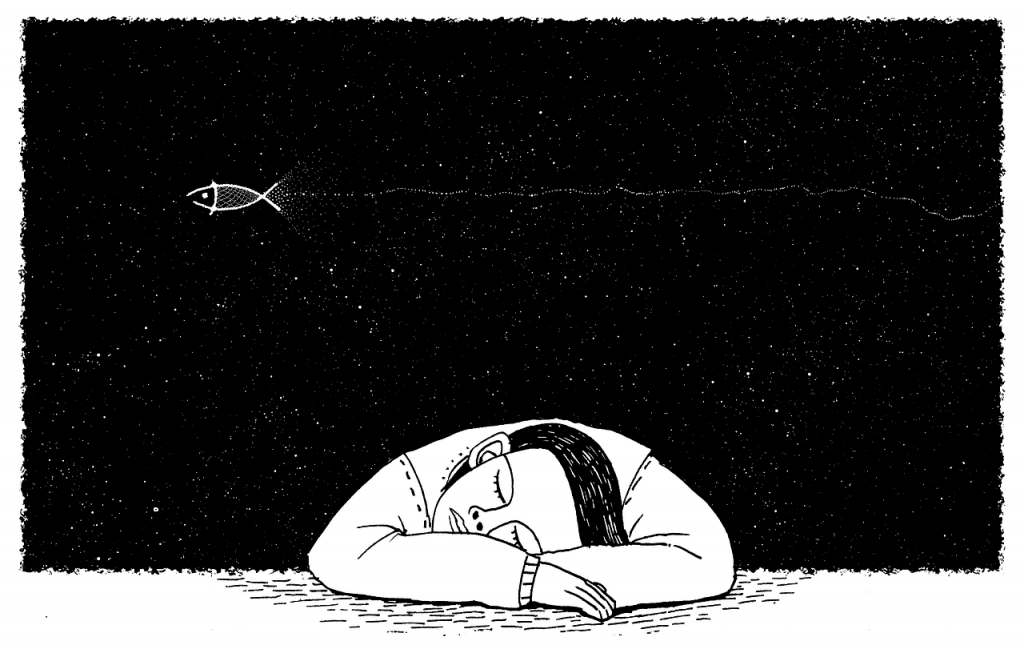
Sleep is your best friend
I’ve read innumerable benefits of sleeping well every day. From keeping us patient and active throughout the day the benefits of a good night’s sleep extend to maintaining our well-being and health.
My recurring bedtime alarm is set for 10:30 pm and 6:30 am – ensuring I sleep for eight hours undistracted. I also don’t shy away from taking half an hour naps when I feel exhausted or stressed.
The book Ikigai says – “Science has shown that sleep is a key anti-aging tool, because when we sleep we generate melatonin, a hormone that occurs naturally in our bodies.”
Melatonin is a powerful antioxidant. So if we sleep well enough we will have enough of this hormone thus ensuring good, long health.
More than the Ikigai book, these two things struck me the most about the benefits of sleeping.
1. While on my morning run today, I listened to the Knowledge Project podcast interview with the author of How Emotions Are Made, Lisa Feldman Barrett.
The way Lisa explained how brains work is fascinating(and I’ve read her book and that’s even more fascinating.). She said that whenever we have to do something – take a call, meet someone, walk, have sex, present in a meeting – our brain prepares for this expenditure. If we get stressed over and over or get mad or worry over and over, we end up spending a lot. And we have to pay for that expenditure by eating well, by feeling emotionally or physical close to someone, and by taking care of ourselves.
Lisa said that one of the biggest replenishers of this emotional deficit is sleep.
In simple terms — if you feel low or had a fight with someone or suffered prolonged stress — sleep enough to fill that emotional void.
(Watch the podcast here or listen to it here.)
2. The popular hermit Christopher Knight — who had spent 27 years living alone in the Maine woods — said that if you can do one thing for yourself, sleep. People are divided over Knight’s choices, but someone who can spend 27 years alone definitely knows a thing or two about what’s good for a human body and mind.
You can listen to the interview of the author of Christopher Knight’s biography The Stranger in the Woods here and find the book here.
Find flow in everything you do — staying immersed improves health and happiness
A wandering mind isn’t a very happy mind. Research found that (i) people are thinking about what is not happening almost as often as they are thinking about what is and (ii) found that doing so typically makes them unhappy.
Héctor García and Francesc Miralles(authors of the book Ikigai) described flow as the feeling when you are so immersed that you don’t see the time and you feel one with everything.
Their description of flow transported me back to my second semester of college. I was in my first year of B.Tech. in Computer Science and Engineering and desperately wanted to switch the major to another stream that could be more fun for me.
But then I happened to do a project in which I had to design and code a software from scratch. Reconstructing a 3d object from its two 2d projections kept me busy for days. I would go to the lab in the evening to work on my project and only return to the hostel the next morning. This went on for days. I still remember those hectic days full of coding, analyzing, editing, and experimenting as one of my best days in my four years of college.
I was in flow. And that flow inspired me to not leave Computer Science. I finished my CS in Bachelors.
Flow is being so immersed in something that your mind doesn’t have time to get distracted.
Now as a creative writer, I often talk about creative zones and creative flows. People, artists and non-artists, both can get into flow through various ways. Some work at the same time, others use the most energetic time of the day, and most just shut off the world to deep dive into their world. I know people who switch off their ceiling fans to study and also those who can code 4000 lines in the middle of an Indian food street.
Have you ever had a workday when you didn’t even remember if you had lunch or not? How about the time you sat to edit a video after dinner and when you looked out the window the sun was shining bright?
If you have experienced such days or nights, you have been in flow, my friend.
This immersion, this unawareness of what’s happening outside, this focus on the task at hand, this being one with the external is freedom —the freedom of the now, as I had mentioned earlier.
Once we have a basic level of income, more money doesn’t make us any happier. The greatest sushi makers of the world don’t feel happy when customers praise their dish or when they get Michelin stars or their bank balance increases. The process of the sushi creation makes those chefs happy. The time they spend in flow, buying the fish, cleaning it, cooking it with precision, immersed, and their minds focused, away from the worries of the world and the mundane things — that makes them happy.
My happiest writing days aren’t those when I see the number of readers on my blog or the income generated by it. I’m the happiest when I spend the day lost in writing and don’t pay any attention to my surroundings. Right now as I pen down this article I’m in a village house in Coorg, Karnataka. And even though I can walk or hike to so many places, I’m happy sitting and writing and staying engaged in what I had planned for the day.
If you never feel at flow while working, notice the smaller details of the task. Don’t just try to finish everything, try to do everything. Be it washing clothes, making food, shopping, coding, designing, playing with friends, watching a movie, et cetera. We will not be able to stay disconnected when we explore the nerves and veins of a project.
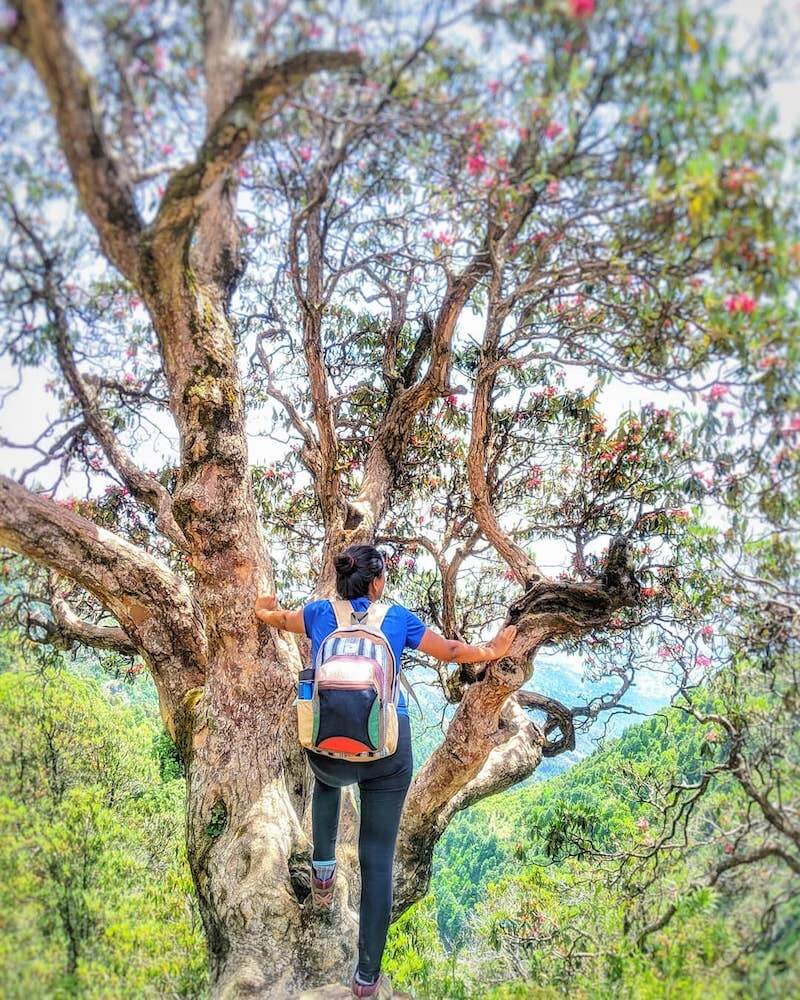
I was blown away by this finding about exercise
“Studies from the Blue Zones (five regions in the world where people live the longest) suggest that the people who live longest are not the ones who do the most exercise but rather the ones who move the most.”
Okinawans didn’t do strenuous exercises, but they moved a lot during their day. From working in the garden, walking, dancing, cooking, the citizens moved all day long. And that was their secret to good health.
We can achieve days – full of movement – and not sitting – through a big mental shift. We have to constantly remind ourselves that we weren’t made to sit for such long hours. And the joy of running around, playing, chasing a dog, or dancing with your friends is unmatchable.
Do try.
A feeling of belonging and togetherness can do more good than we think
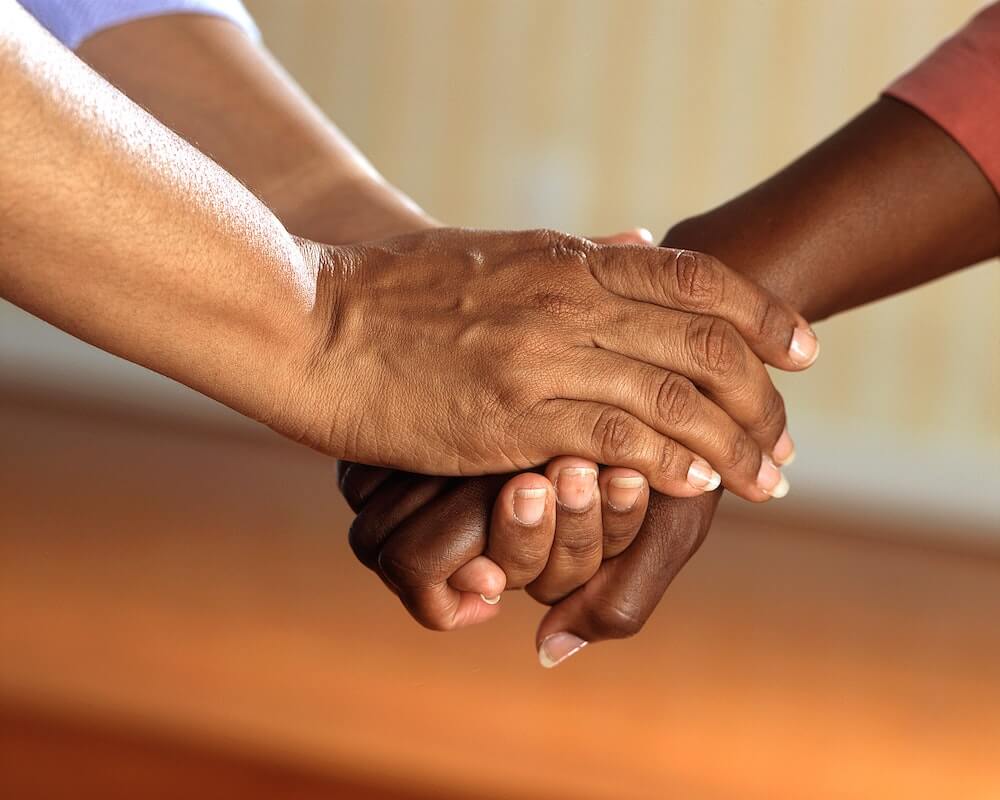
Long ago I had written a piece on the importance of relationships for human beings. In the article, I had included Harvard research done over 80 years on 800 men (the longest research on happiness).
The study had concluded that more socially connected people are happier, healthier, and they live longer. Men who leaned into relationships with family, friends, and community were happier than the more popular, wealthier, and successful men.
Sounds astonishing, right?
Moai — or meeting for a common purpose — is the main reason for Okinawans’ long health. They are put into a community since their childhood, where they make strong social ties, and support each other life-long.
Whether helping each other with a chore or having dinner together or celebrating a birthday or doing karaoke, people in Okinawa meet each other daily and spend a lot of time together. Everyone is part of some community or the other. The members have a strong feeling of belonging and togetherness.
Have you ever found yourself thrilled to meet your friend for dinner? You will find yourself imagining the time you will spend together, where you will go, what you will do. You feel happy about meeting a friend because you get a sense of belonging, of being part of someone else’s life.
When I had started writing and blogging, I would rarely take out time to meet my friends. Months would go by, and I would be working day and night. But loneliness crept in soon. I started feeling disconnected. I realized I have to start seeing my friends more often because work will never stop.
My partner and I were celebrating this Diwali and Christmas with friends. I was so excited about the celebrations that I started planning them days ahead. The actual gathering lasted far shorter than the time I spent planning, imagining, and feeling thrilled about the get-togethers.
I keep reminding myself that we don’t need a special occasion to meet friends. Now I invite people without any occasion and find an excuse to drop by at others’ houses. As I’m getting back in touch with my friends, I feel happier and loved. I know I’ve my people. If I need something, I can call a friend. And if a friend would be in need, I will show up. Looking out for each other is key to maintaining a healthy and happy relationship.
A Chilean island where I lived for four months follows the concept of Minga, which means a community activity. In a minga, people get together, finish some formidable task of one of the members, and celebrate afterward. Shifting a stilt house, baking mussels in the ground, or cooking empanadas together — the activity doesn’t matter. Whatever the people do, the togetherness gives them meaning and makes them happy.
Enveloped by work, ambitions, and responsibilities, sometimes we lose human connectivity. At that time (as neuroscientist Lisa Barrett suggests) even talking to a shopkeeper or calling a friend or watching a movie with someone can help us feel less isolated and replenish our emotional deficits.
In the words of some old Okinawans,
“Getting together with my friends is my most important ikigai. We all get together here and talk—it’s very important. I always know I’ll see them all here tomorrow, and that’s one of my favorite things in life.”
“Talking each day with the people you love, that’s the secret to a long life.”
“I say, ‘Hello!’ and ‘See you later!’ to the children on their way to school, and wave at everyone who goes by me in their car. ‘Drive safely!’ I say. Between 7:20 a.m. and 8:15 a.m., I’m outside on my feet the whole time, saying hello to people. Once everyone’s gone, I go back inside.”
“I wake up at five every morning, leave the house, and walk to the sea. Then I go to a friend’s house and we have tea together. That’s the secret to long life: getting together with people, and going from place to place.”
Are you getting together with your close ones often?
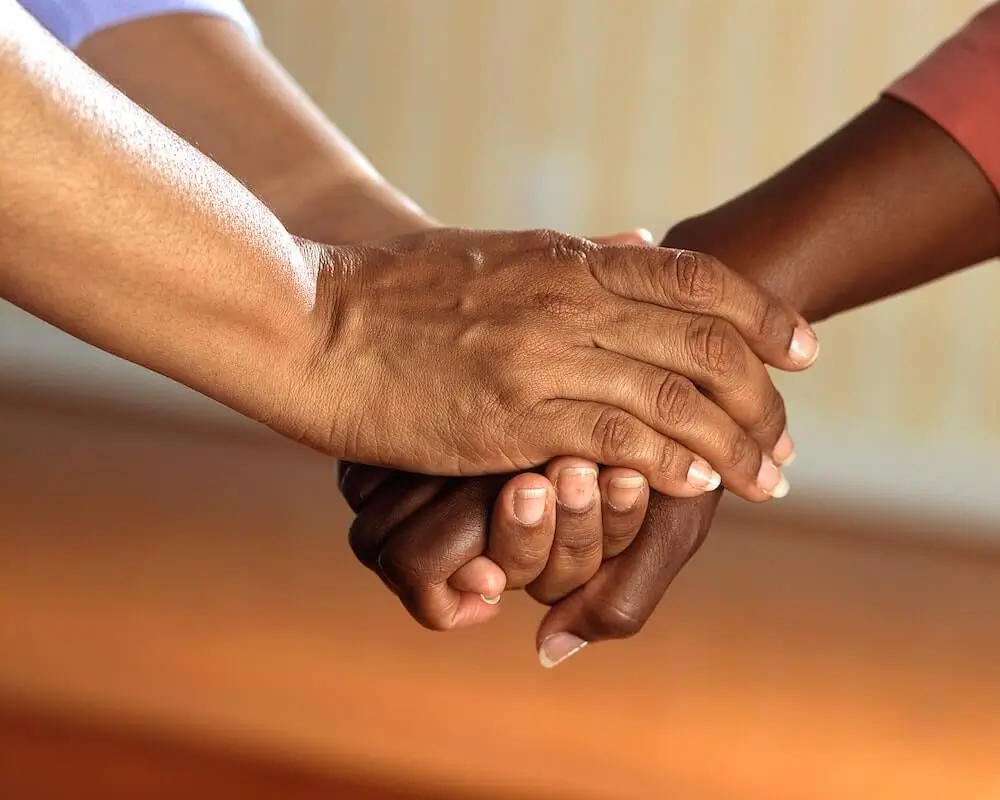
Long story short.
How to live a happy, healthy, and aware life?
I have given you a lot to think about. I didn’t want to sound preachy or tell you I have an amazing life (but maybe I’ve done exactly this).
To tell you the truth, I continuously struggle with the habits I have praised. But everything I said has some source of experiential or researched truth in it.
Ikigai, the Japanese way of living, Ayurveda, scientific analysis are only words and concepts, things people say. The benefits of these learnings can only be realized when we practice them.
But in this productive world – where doing is exponentially trumping being – everything aims towards making us the most efficient human being there ever has been. I myself have encouraged productivity more times than I can count.
But this article suggests you take things slow, spend time with people you love, finish activities with awareness, and play. When I reread this piece it seems that all the time we would be eating with friends, playing games, or tending our garden. When would we do our work? When would we publish that book? When would be make that multi-billion business?
On average, I spend 13-14-15 hours a day in just routine activities.
I get up, get ready, go out to walk/run or do yoga, meditate a bit whenever I can, shower listening to Beethoven, have my breakfast, work and write uninterrupted for a few hours with hourly breaks.
By 5-6 pm, I’m ready to have dinner with my partner and spend time with him. And after 2-3 hours, I read or sometimes I have to take care of administrative tasks. Then I sleep.
And on the days I’m traveling or exploring or hiking, my schedule looks quite different.
Given the competitive environment I grew up in, I find it hard to not focus on productivity all the time. I have even thought about being productive during my first run to the bathroom. Why can’t I spend those ten minutes reading news or emails or a book? But as I don’t want to wake up with shocking news or emails or even a book (because every book focuses on one thing and I don’t want to make my day about that one thing), I sit and stare at the walls.
As Alain De Botton and Jason Silva discuss in this Flow podcast, if you do one thing you will always have a longing for that other thing. You can’t have it all.
So I’m trying to accept that omnipresent longing for things I can’t do. Right now I’m writing but I could also be hiking or plucking chikoos from trees. But what’s the point of thinking about what I’m not doing while I’m busy with another task? You guessed it right. Nothing. We should rather accept that compromise and move on.
I see my work getting done faster when I’m healthy, content, and focusing on the task at hand. When you do one thing at a time, you will find yourself closer to your goals.
Stay in the moment (easier said than done), stay calm (again, easier said than done), and keep doing things that give you purpose, a sense of direction, and are important to you. Be with your people, eat well, sleep deep, and try not to get stressed on every little thing.
Most of the things I suggested – sleeping, being peaceful, eating less, spending time with family and friends – sound simple. And these simple things can change the course of our life.
A simple habit of eating an early dinner (that I picked up from Chilean culture) changed my entire routine. Now I can’t eat a late dinner. With two meals a day, I eat breakfast early, I sleep early so that I don’t get hungry at night, and I wake up early. Eating dinner early is my keystone habit that helped other good habits to flourish, gave them a platform to operate from.
Try a couple of those simple things and see the change.
But go easy. Do things calmly. Vipassana teaches us that even though we are working towards a goal, we don’t have to attach ourselves to the result of that goal. When we aren’t attached, we can operate at ease. So please don’t fret over not being able to eat less or not sleeping enough for that would be really counterproductive. Operate at ease.
All is Well. The best life hack is to tell ourselves all is well. All is well.
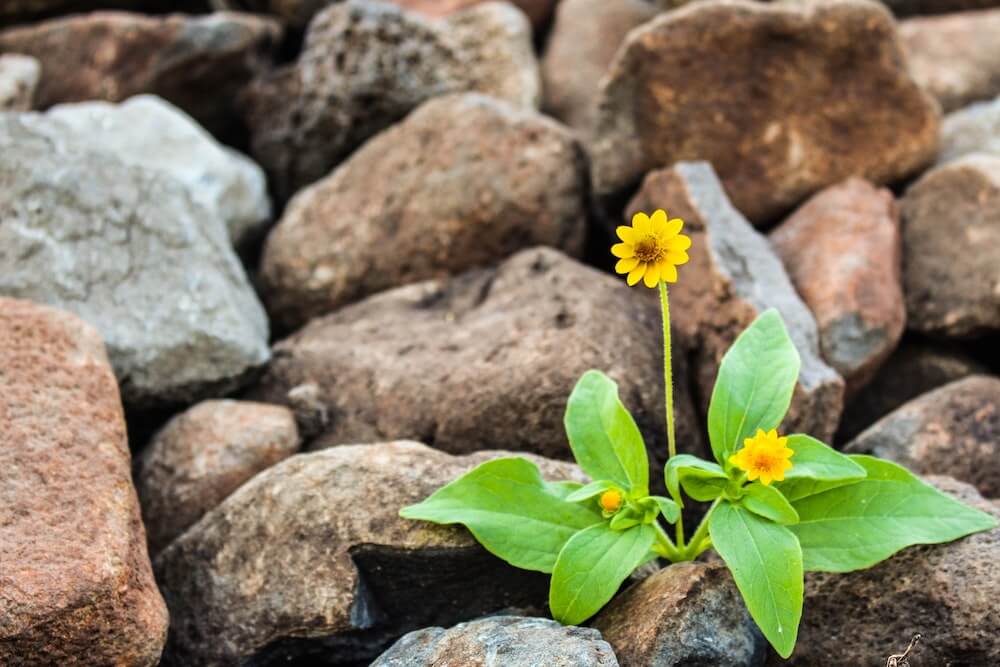
What is your secret to a happy, healthy, and conscious life?
*****
*****
Want similar inspiration and ideas in your inbox? Subscribe to my free weekly newsletter "Looking Inwards"!

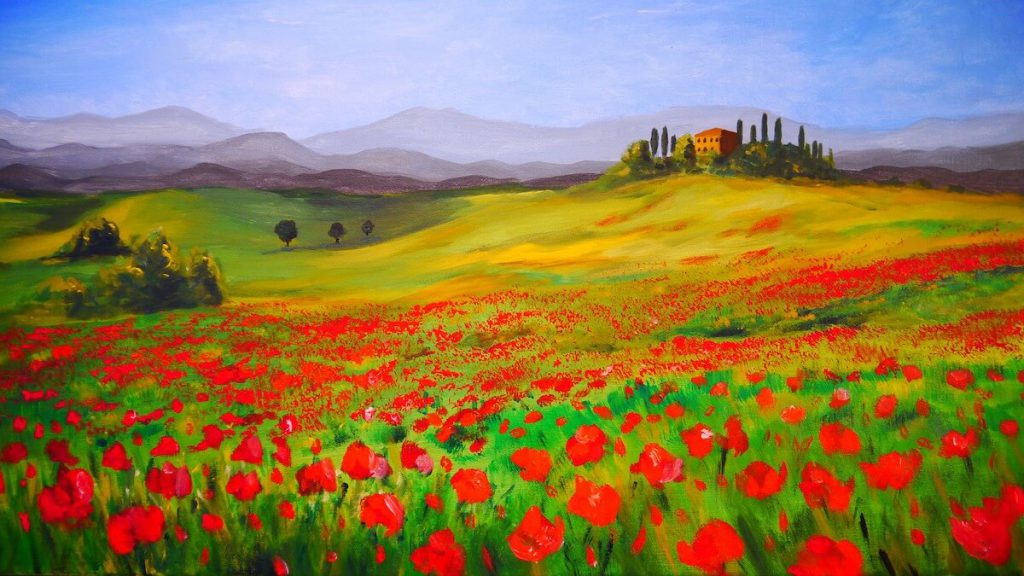
This is beautiful! I am on my way for a better and more mindfull thinking!
To live healthy and to be hard worker, we should know Ikigai. I think there is no need to read a book for knowing Ikigai, if we follow your parent’s guru “Bauji”. Am I right? He was an awesome man. But I could not understand what he did waking up at 3 am. There was a question to my mind that u didn’t mention here. when did he go to bed for sleep?
Thanks for a very informative article Priyanka there is a lot of good advice here. I have never heard of Ikigai so will look further into that.
Regarding fasting, I first came across it as a diet/lifestyle in 2012 when I saw a programme on British TV by a Dr Michael Mosely. I have been practising various versions such as the 5-2 alternate day, one meal a day etc. Like you I am currently having two meals a day, one late morning usually, then an early evening dinner, I feel well eating like this and I am never hungry, cutting out sugar and carbohydrates helps a lot as well.
This is an interesting video. https://is.gd/6XZxWq
Thanks Terry. I am glad to know your intermittent fasting journey is going well. I love this technique too and feel good. I will see the video soon. 🙂